I have always been annoyed by most commercially available zonker strips. Most of them are far too large and long haired for my use.
I have always been annoyed by most commercially available zonker strips. Most of them are far too large and long haired for my use. 90% of all available strips are cut from rabbit, and in most cases they are both too wide in the skin and too long haired for anything but larger flies.
Precut skins
Today the selection is much, much better than when I started, and all the skin types I like such as mink, nutria and squirrel are all available as strips. My personal preference is so called zonked skins where a whole tanned skin has been cut into narrow strips along the hair direction. This is by far the most economical way to buy strips. A whole precut skin might be more than you need (yeah, right!), but then you can split it and sell it off (or give!) in bits to your fly tying friends - or simply buy together with tying friends, split and trade.
Precut skins can be highly irregular with varying quality of strips, even on the same skin; some short, some not straight and oftentimes fairly large parts of the skin not cut at all. The best advice is to get your hands on the skins, take them out of the bag and check the quality of each. There's a huge difference between individual skins. I have zonked skins from well esteemed manufacturers such as Hareline and Wapsi, and even their quality vary greatly.
In spite of this I can generally recommend handpicked precut skins, but if you stumble over a whole skin that you like, just buy it. You can cut your own strips, and the leftovers from both the whole and the zonked skins can be used for hairs for wings, tails and hair hackles - not to mention dubbing.
Loose strips
If you don't want to buy whole skins, you can opt for strips. Most bags will contain 3-6 strips either curled into a small bag or stapled to a piece of cardboard and put in a long bag. Same rule applies as above: get the strips out of the bag and check them. They are generally more uniform than the skin strips, but you also get less material for your money. They may be pretty curled and messy to look at, but don't worry. Once you have bought the strips, get them out of the bag, moisten them a bit - simply dip them quickly in water - stretch them and hang them with the hair down to dry. Once they are dry, the skin may have stiffened a bit, but that can easily be softened again. Comb the hair and massage the skin a bit, and the strips will regain their softness and the hair will be straight. Store the strips stretched in a suitably large container or attach them to a piece of cardboard stored in a long bag. That will keep them straight and make selecting and tying much easier.
Not industrial
Pretty early in my fly tying career I wanted to be able to cut my own strips, as narrow as I wanted them and from any kind of fur I could find that suited me.
Cutting skin isn't difficult if you have a (really) sharp knife, a scalpel or a razor blade. But cutting skin with fur on it can be a bit of a challenge. You can't just lay the material on a board and cut it along a ruler, because that will most likely trim off a lot of the hairs. Cutting from the skin side is a must, but using a ruler is difficult, and cutting "freehand" on a board or a cutting mat is even worse unless you only cut very short, triangular, tapered strips. For longer, parallel strips you need a way of having the skin "suspended" and fixed at the same time while cutting.
I have seen home made tools where razor blades are held together in long rows separated by washers to give the right width of the strip. You then pull your fur over this contraption, skin side down or cut the strips by running the tool through the skin while it's stretched. From that you get a whole bunch of strips at once. Nice idea, but a little too industrial for my daily use. I don't need quite as elaborate a setup, since usually only cut a few strips at a time, and often from smaller patches of skin. The tool can be made in a modest version if you want to try, and the little video embedded here shows you how to make and use such a cutter.
My method
My own method is even simpler, and uses the vice and a scalpel (or a razor blade). The method is of course not mine as such, but I started using it before I had seen anybody else do it.
I select the fur I want to cut, grab the edge of the skin fur side down in the jaws of my vice, and pull the opposite edge with my fingers, making sure that the hair direction on the skin is from the vice towards my fingers.
Then I stretch the skin tight and simply cut along the path between the vice and my fingers. I start a little bit into the skin, and stop before reaching the opposite edge.
I repeat that a couple of times and then move the grip of the vice a bit to the side, to get to new and uncut skin. If you are uncertain about being able to cut straight, simply draw lines on the back with a thin marker and a ruler. You can see a very short video on the method below.
I can cut really narrow and long strips this way, but also get the triangular, tapered strips that many tyers use for modern tube flies. I almost exclusively cut parallel strips, and taper them a bit before tying them in.
When I have cut 2-3-4 strips I usually have enough for the batch of flies I'm about to tie, but I could of course keep on going until the skin was almost completely cut into strips.
I cut the strips off the skin as I need them, leaving the unused strips on the skin. When the regular part of the skin is used up, I end up with the edges and irregular parts, which I save for dubbing, hair wings, tails etc.
Cutting your own zonker strips - a very short video intro.
Skin for zonker strips
My personal favorite zonkers use mink, squirrel or nutria (coypu), which are all very dense and much shorter than most rabbit. You can also look for opossum, chinchilla, muskrat, stoat, even chipmunk or fur from similar animals with short and dense hair coverage. Ordinary rabbit and most fox not to mention the really long haired Finn racoon is fine for larger flies for salmon and pike and in some cases larger saltwater flies.
The skin needs to be tanned, and watch out for hide thickness! The hide needs to be as thin as possible - although not paper thin and fragile. Thick skin makes it difficult to cut perpendicular to the hide if you cut the strips yourself, and will give you thick skin to tie in and often result in skin sides being very visible and even curling "sideways" on the finished fly.
Tanned mink skins are widely available while nutria (essentially a less expensive mink replacement) and squirrel isn't quite as common. I usually try to buy whole skins. Mink can be pretty expensive, but go for the lower grades, and you will be able to find whole skins at prices, which you can pay. Old mink furs can also be a good source, but make sure that you get a look at the backside, because most mink coats are sewn together from thousands of little pieces of mink, and that isn't really suited for zonker strips.
Both squirrel and nutria skins are more reasonably priced, and just as good if you want my opinion. Many furriers have a large selection of whole skins, and you can simply sample them with your fingers to assess their value as fly tying material.
If you are like me you go for thin, soft skin with dense, short fur in nice, natural colors. Many of these skins are also available dyed in different colors from the dull and almost natural to the really bright and almost neon-colored.
Suitable fur
I buy most of my fur at a furrier, and go there now and then to go through their scrap bins, which usually contain some pretty good pieces at very reasonable prices.
I buy furs as mentioned above, typically fairly short haired but dense in the fur, which are suitable for my style of flies. You can buy any skin you like, and rabbit is an obvious choice, but different racoons, foxes and other animals are useful too if you want longer hair and larger strips.
If I find a fur patch or a whole skin that I like with regards to length, texture, color and so on, the hide quality is the second deciding factor. The backside "leather" carrying the fur needs to be as thin and soft as possible. Tanned skin is usually the only way to go, since you need it to be soft and flexible, and cutting dried skin is almost impossible.
The fur side needs to be even and without too many bare spots or broken or cut hairs. Some scraps are scraps because they have spots that miss hair, have been unevenly dyed or have other flaws.
The skin side should be even and smooth, and without large holes or tears. Smaller holes are common, but easy to avoid when cutting the strips.
Flaws are generally not a big deal, since you can cut around these blemishes or cut through them, and then just use the parts of the strips that are nice.
"Exotic" commercial strips
Commercial strips are often rabbit, but squirrel, fox, racoon and nutria are becoming more common. Getting your hands on other types of ready-made zonker strips can be hard.
I once stumbled over a box of bags in a local flyshop. These bags contained zonker strips from the Dutch material supplier "The Kelson Collection", and included all kinds of fur from large and bulky strips of deer hide over exotic strips cut from snow goat and stoat to minute strips cut from moleskin.
I bought a whole bunch of different strips, and still today regret that I didn't buy more because I have almost used them all. I don't think the Kelson Collection exists anymore, and I haven't seen these exotic strips for years.
Such strips have given me the opportunity to tie some really interesting flies over the years. One example is the Strange Christmas Tree with its seal skin strips, which were made by Danish Fly Company.
Sometimes you bump into something different. Many years ago I saw "grizzly" or barred strips at a Tackle Dealer show in Denver, and they are now widely available. They are dyed fur that has been dyed in stripes, and cut to create tiger striped strips. If you want really long haired strips for larger flies - saltwater or salmon tubes - you are also in a good position. The so called Finn Racoon is becoming more and more widely available.
But apart from such lucky strikes, you probably need to cut strips yourself to get something really different.
Cross cut vs. straight cut
Zonker strips - or rather fur strips, because they are not necessarily for zonkers - can be cut in two different ways: straight cut and cross cut. Straight means cut in the hair direction, while cross cut strips are cut across the skin, so that the hairs lie perpendicular to the skin strip.
The straight cut strips are for the zonker type of flies and wings on pike or salmon flies, while the cross cut are for bunny leeches, MOAL's etc. where you want to wind the fur strip as a dense body hackle. That can be done with straight cut strips, but it's a lot easier to get the hair to lie in the right way when they come out at an angle from the skin rather than being straight along the skin strip. Cross cut is sometimes called X-cut.
For zonker flies you will need straight cut strips also referred to as S-cut strips.
Sources
Sources for strips and skins - most of these don't have direct sales, but find your local dealer through these links:
- Eumer - Finnish company specializing in tubes for tube flies, but also with a large assortment of zonker strips cut from fox, nutria and finn racoon.
- The Fly Company - a Danish company that deals in fly-tying materials and has a wide array of zonker strips. I got my seal skin strips from this company.
- Foxy-Tails - British company with a large selection of furs and ready-made zonker strips.
- Futurefly - Danish company with large selection of high quality skins and tube fly materials. The skin selection consists of several types of rabbit, fox and squirrel in many colors - including barred. The skin quality is generally exquisite and very consistent.
- Hareline - US company with a wealth of fly-tying products, and a large selection of rabbit zonker strips in particular, but also some squirrel strips. Warning: the web site is pretty lousy...
- Wapsi - US company with rabbit, racoon, mink and squirrel as whole skins as well as strips.
- Log in to post comments



















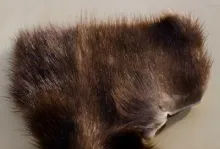

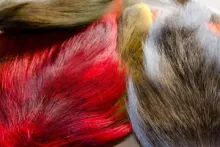


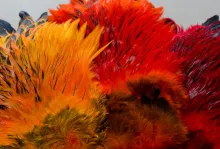
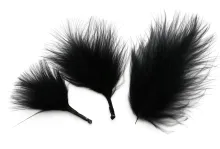
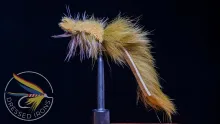
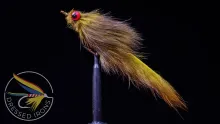
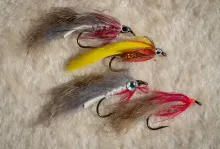


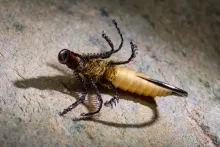

Wonderful info
This is such wonderful info. I have looked in a lot of places for this info on cutting skin stripes. You made it easy . Thank you much.
Well written and very educational
I thought this article was very well written and very educational. I am an 84 year old beginner fly tyer, so this gave me lots of help. Thanks, Carl
Cutting rabbit strips
Excellent, very interesting technique, shall be making a cutter tomorrow.
Thank you
Mike